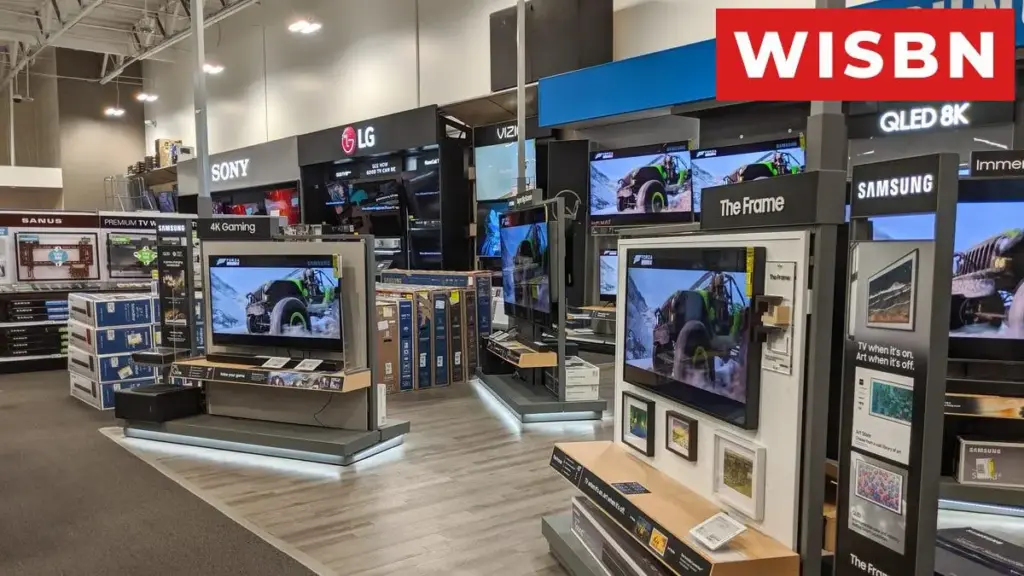Both LCD TVs and LED TVs have been sold for many years. TV-sized LCDs became common in the mid-2000s, and LED TVs arrived a few years after that. Marketing teams at many firms have muddied the definitions behind these labels. Today, many LED TVs carry names such as QLED or mini-LED. OLED, conversely, is a different technology despite the similar-sounding name.
LCD TVs and LED TVs are built on the same basic technology. For the most part, modern LCDs use LEDs and vice versa. Still, the distinctions are interesting and worth exploring.
The short version
All LED TVs are LCD TVs, but not all LCD TVs ever made were LED TVs.
Other names for LED LCD TVs:
- LED
- QLED
- QNED
- ULED
- Mini-LED (See below)
TV tech that is not LCD:
- OLED
- QD-OLED
- MicroLED
The slightly short version (LCDs and LEDs unite!)
LCD stands for liquid crystal display. As the term implies, this display technology is a thin layer composed of millions of pixels arranged in a grid. When electricity is applied to those pixels, they twist to either block or permit light (generated by the backlight) and form an image.
Older LCDs used CCFLs, or cold cathode fluorescent lamps, which were essentially smaller versions of the long fluorescent tubes found in offices and other commercial spaces. Those CCFLs contained mercury, so many countries banned them. Still, numerous TV makers had already moved to LEDs anyway.
LED stands for light-emitting diode. LEDs aren’t typically used to form the picture itself (with one exception I’ll mention shortly). Rather, they are a light-generation technology and have been used as the backlight in “LED TVs” for about 20 years.
In short, if you buy a TV today that isn’t OLED, it’s an LCD panel with an LED backlight. Calling it an “LED TV” is misleading, but after years of marketing that label has largely persisted.
The not-at-all-short version (LEDs all the way down)
Not all LED LCD TVs are created equal. The number of LEDs, their placement and how they’re driven can differ widely.
At one extreme, the cheapest LED LCDs often have a single strip of a few LEDs along one edge of the screen (commonly the bottom). These sets aren’t very bright and deliver the poorest overall picture quality of any TV type currently available, though backlights with multiple dimming zones are becoming more common among the best budget models.
Once a feature of mid-tier LED LCDs, “local dimming” models include extra processing that manages the dimming of groups of LEDs. This allows the TV to darken shadowed portions of an image beyond what the LCD layer alone can achieve. Picture an image of the moon against a dark sky. The LEDs behind the sky would dim to appear darker, while the LEDs behind the moon remain bright. How well this is implemented varies significantly among brands and models.
At the other extreme are LED LCDs packed with many, many LEDs. Where an inexpensive LED LCD might use only a handful of LEDs, and a mid-range set might have dozens or a few hundred, top-tier models employ a different approach and contain thousands of LEDs. These are categorized as a subtype called mini-LED TVs which are an upgrade from QLED TVs and approach the performance of OLED TVs.
Mini-LED TVs deliver some of the finest picture quality available today, second only to OLED, and can produce extremely bright images. While pricier than other LED LCD types, they are typically less expensive than OLED at the same screen size.
Between standard LED TVs and mini-LEDs sit the so-called QLED TVs, a marketing label popularized by Samsung but used by several manufacturers. These are LED TVs that also use quantum dots for improved brightness and color.
Lastly, there are genuine “LED TVs” that have no LCD layer at all. You’re looking straight at millions of LEDs, which directly generate the picture (each pixel is an LED). These are called microLED TVs and are often wall-sized and extremely costly. Recently, a few companies have produced TV-sized models, but they’re still very expensive. In the near term, microLED will probably remain projector-replacement tech for the very wealthy.
Which is better: LED or LCD?
Broadly speaking, LED LCDs outperform older regular LCDs, but most LCD TVs today are indeed LED-backlit. Within the “LED TV” group there’s enormous variation in price and performance.
In addition to covering display tech, Geoff does photo essays about interesting museums and other topics, including nuclear submarines, aircraft carriers and 10,000-mile road trips.



